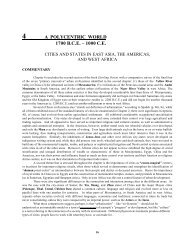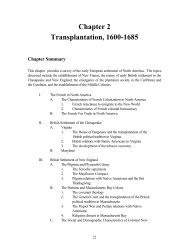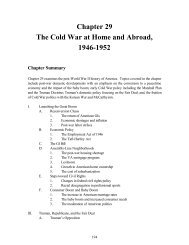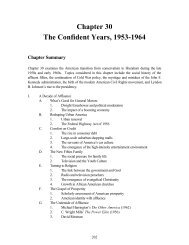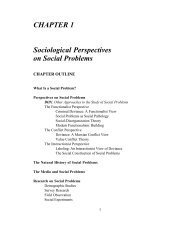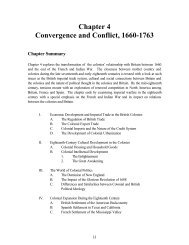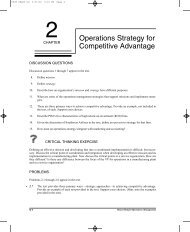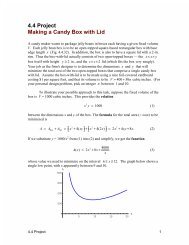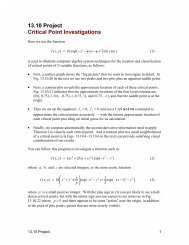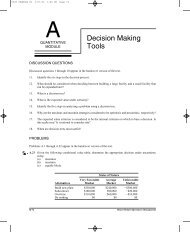Merchandising Operations and the Accounting Cycle - Pearson
Merchandising Operations and the Accounting Cycle - Pearson
Merchandising Operations and the Accounting Cycle - Pearson
Create successful ePaper yourself
Turn your PDF publications into a flip-book with our unique Google optimized e-Paper software.
EXHIBIT 5-13<br />
Relationship Between <strong>the</strong><br />
Inventory Account <strong>and</strong> Cost<br />
of Goods Sold in <strong>the</strong> Periodic<br />
Inventory System (Amounts<br />
for Austin Sound Centre Inc.)<br />
248 Part One The Basic Structure of <strong>Accounting</strong><br />
Inventory<br />
Beginning balance 38,600<br />
Net purchases 87,200<br />
Freight in 5,200 Cost of goods sold 90,800<br />
Ending balance 40,200<br />
This T-account shows that <strong>the</strong> perpetual <strong>and</strong> <strong>the</strong> periodic inventory<br />
systems compute <strong>the</strong> same amounts for ending<br />
inventory <strong>and</strong> for cost of goods sold:<br />
• The perpetual system accumulates <strong>the</strong> balances of<br />
Inventory <strong>and</strong> Cost of Goods Sold throughout <strong>the</strong><br />
period.<br />
• The periodic system determines <strong>the</strong> correct amounts<br />
for Inventory <strong>and</strong> Cost of Goods Sold only at <strong>the</strong> end<br />
of <strong>the</strong> period.<br />
The authors thank Betsy Willis for suggesting this exhibit.<br />
returns <strong>and</strong> allowances. Subtract ending inventory, <strong>and</strong> <strong>the</strong> result is cost of goods sold<br />
for <strong>the</strong> period. Exhibit 5-13 diagrams <strong>the</strong> alternative computation of cost of goods sold,<br />
with Austin Sound Centre Inc. amounts used for <strong>the</strong> illustration.<br />
The Decision Guidelines feature summarizes some key decisions of a merch<strong>and</strong>ising<br />
business. One key decision is how much inventory <strong>the</strong> business should purchase<br />
in order to achieve its goals.<br />
Here is how Frank Ernest, <strong>the</strong> manager of Austin Sound Centre Inc., would decide<br />
how much inventory to buy (all numbers based on Exhibit 5-13):<br />
1. Manager predicts Cost of goods sold for <strong>the</strong> period.................. $ 90,800<br />
2. Manager predicts Ending inventory at <strong>the</strong> end of <strong>the</strong> period .. 40,200<br />
3. Cost of goods available for sale = Sum of Ending inventory<br />
Cost of goods sold........................................................................ 131,000<br />
4. Subtract <strong>the</strong> period’s beginning inventory .................................. (38,600)<br />
5. The difference is <strong>the</strong> amount of inventory to purchase<br />
(including Freight in) during <strong>the</strong> coming year............................ $ 92,400



